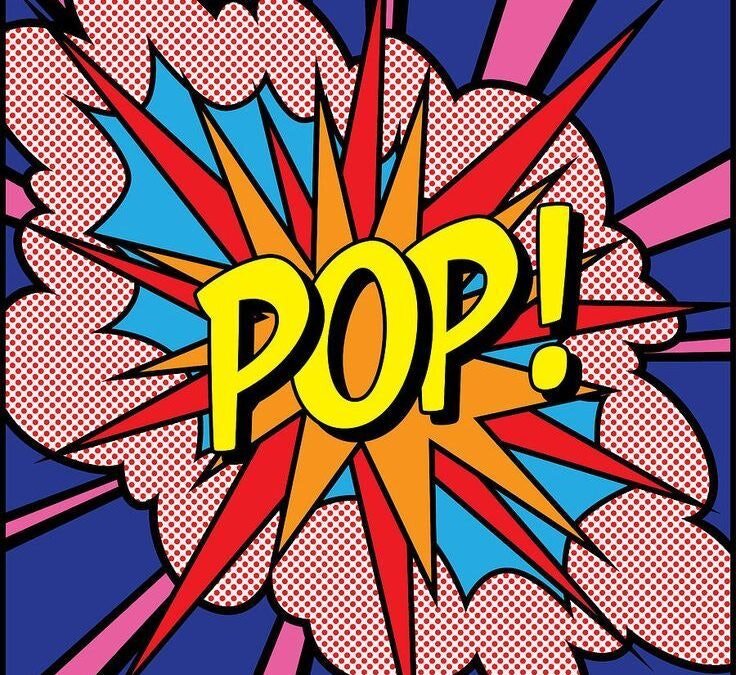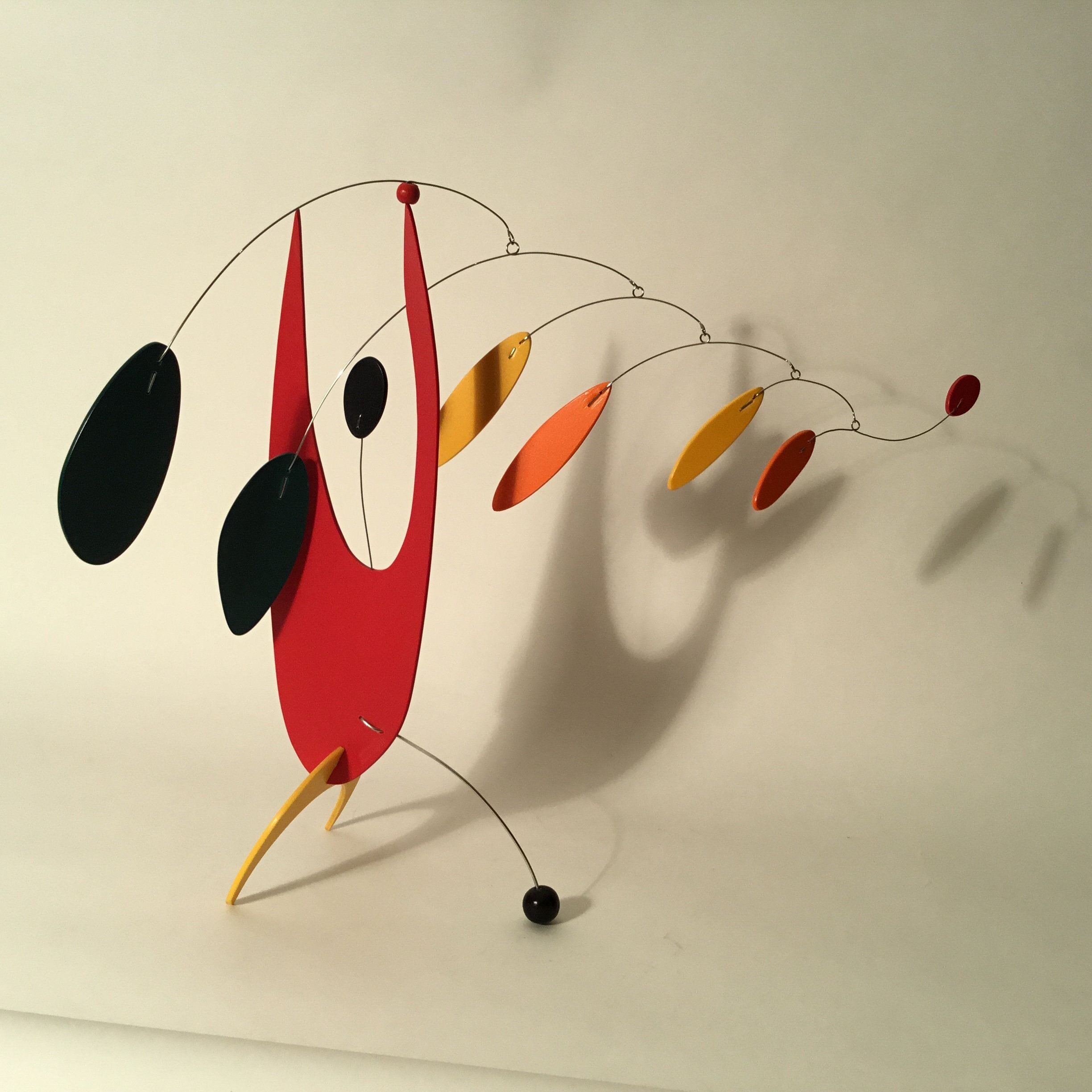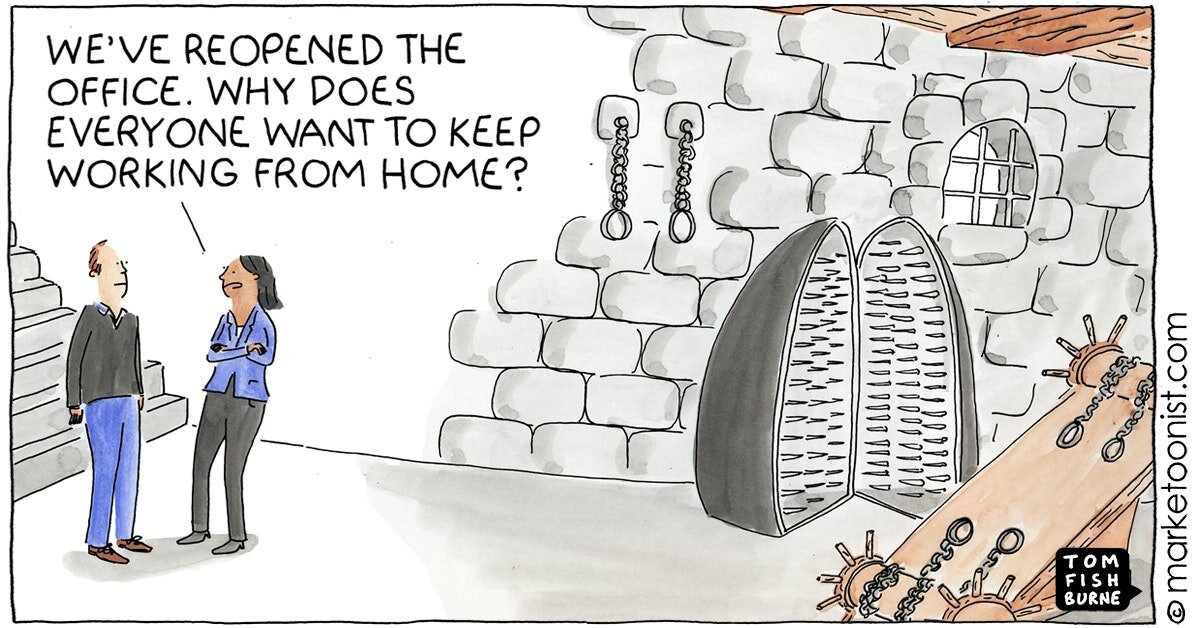Impact!
Roy Lichtenstein
Many want to have an impact, to make a difference, to be seen and to be heard.
One can have an impact and stand out in ways that generates attention but not admiration.
What can we learn from people who make an impact in ways that generate goodwill?
Outcomes. Scale. Iteration.
Three behaviors are commonly seen in impactful people we want to be like.
a) Outcomes: They focus. They focus on outcomes versus process. Deliverables vs drama.
b) Scale: They find ways to have a far greater radius of impact by projecting far and wide.
c) Iteration: They continuously improve and use time as an edge.
Outcomes.
Spend time one focusing on one or more of three outcomes.
a) Help make someone or something better: Impactful people we admire tend to be generous and kind. They give, share, teach, share, show and help grow an idea, a person or firm.
b) Grow skills: Practice craft. Build muscle. Learn.
c) Create / Immerse themselves in tattoo experiences: If the core of existence is experiences, impactful people create, participate, and enable in experiences that give them or others joy and ideally create tattoos in the mind by being memorable.
If one is not growing others or oneself or having an experience that is joyful or pleasant, why are we doing what we do?
Clearly in many cases we spend time on things that are difficult and unpleasant because of illness, bad luck, a lack of opportunities, or the constraints of a job.
With a little luck and help over time we need to find time to grow from these challenges, find ways to help others and to lessen the negatives and look on the optimistic side of things to have an impact.
Scale.
Successful people find ways to scale in many ways of which the three most powerful levers are those of stories, talent, and technology.
a) Stories: Stories scale. They pass from person to person. They echo across time and space. Learn to be a good storyteller and your ability to blend imagination, metaphor and insight will ripple and reverberate.
b) Talent: A powerful way to scale is through talent. By building teams and leveraging the impact of others and their skills. By teaching and growing talent, a person scales and grows through other people’s growth.
c) Technology: Today technology allows a professor teaching a class on Happiness at Yale or Justice at Harvard to share their knowledge with worldwide audiences. Modern platforms, cloud computing, powerful and democratized technologies like the mobile phone enables a person at home using Tik-Tok to end up with a top-rated television special on Netflix seen all around the world.
Embrace stories.
Surround yourself with and channel through talent.
Leverage technology.
Iteration.
The most impactful people use time as a weapon in three ways.
a) Only Asset: They realize it is the only real asset since it the one they cannot make or buy more of. If someone is wasting their time or trying to buy it for cheap the realize they are paying with their lives and they walk away as soon as they can.
b) Continuous learning: They constantly learn by reflecting on what has gone before and their experiences to improve and grow. They realize it is not experiences themselves but reflecting on experience that one grows from. Many look back at each day, celebrating what worked and try to understand from the mistakes and missteps that were made.
c) Sequencing: They sequence their days and schedule to do the things that matter the most first before they lose control of their calendars and fall into the pincers of the urgent or the cacophony of distractions and digital stream where activity is confused with productivity.
In the end there is only time and how we spend our days is how we spend our lives
Solving Problems by Leveraging Photography
Many of the techniques used by the best photographers are the ones we can use to become great at problem-solving.
The essence of photography
At its essence photography is driven by three variables:
a) Framing: What the photographer decides to focus on, how the camera is angled and positioned relative to the subject and what is left in and left out of the viewfinder.
b) Exposure/Lighting: This is a combination of aperture, shutter speed and how sensitive to light the film is (ISO speed)
c) Editing: Once upon a time with analog film only professionals had the tools of editing (darkrooms, chemicals, and papers) but today with digital capabilities of our phones we all can pre-edit by taking several test shots, give ourselves lots of editing options by taking a lot of pictures and then later with easy-to-use tools sculpt our pictures to our liking by cropping and filtering and more.
The essence of problem solving
The best problem solvers tend to be good at three factors:
a) Framing the problem by asking the right question: They want to know whether one is solving the right problem.
b) Getting the right input/data/facts so they can throw as much light on the problem: Can one get as much illumination as one can?
c) Interrogating and iterating the answer: The first answers tend to be somewhat right and often lead to additional questions or additional fine tuning before one reaches a more robust solution.
Leveraging the principles of photography to improve decision making.
Framing the problem: Three simple questions to ask before you address a problem or challenge.
a) Focus on the right problem: Often organizations and teams spin their wheels on either the wrong problem or do not frame their problem in the right context, time- horizon or challenger set.
The US Auto Industry thought their problem was to enhance quality of their hardware against the Japanese or design their exteriors and interiors to drive desire for their product against the German luxury brands when the real existential challenge was to become adept at electric and software vs Tesla and address a decline in a desire for auto ownership due to rise of Uber and Lyft.
b) Ensure differing points of view: It is critical to look at a problem from the right angle and ensure different viewpoints are included in problem definition. One reason companies miss the forest for the trees is they fail to have diverse voices and backgrounds involved in strategic problem solving. Diversity is not just critical for ideation but to understand what the issues are.
Too many traditional publications failed to adapt to digital in part due to not having technical folks and younger folks who were comfortable using digital media having a voice in the room where decisions were framed. As Boards become more diverse it is critical that they ensure that there is diversity of voices and backgrounds and not only a diversity of faces.
c) Choosing what problems to look at and what not to tackle: The best photographs often result from tight framing and often the best solutions come from the tight definition of the problem.
Many times, we might try to solve problems that are so broad that they are never solved because either it requires too many people or too many resources or too much time.
2. Ensuring the right exposure: In the world of problem solving the aperture is how much data you decide to look at, shutter speed is how much time you allocate before a decision must be made and ISO is how much leeway (graininess) is acceptable.
a) Quantity and Quality of Data: If the inputs are not correct or valid then it is unlikely the outputs will be. After framing a problem correctly, it is key to ensure that as much valid data, input, and learning is brought to the solution.
One reason the original We Work imploded was that the key data they overlooked were from the industry they really were in (real-estate leasing) and rather they focused on the ones they were not relevant (software, luxury experiences) in how they valued themselves and raised money.
b) Speed of decision making: So often problems do not get solved since there is a demand for more information, more data, and more input. Delay and dithering should be avoided by putting tight deadlines on decision making.
Too many organizations spend time ingesting lots of inputs and look at their colon in many ways but end up with no real output.
In another vernacular to solve a problem one must sooner or later emit or get off the pot.
Sometime though one rushes too fast and hurried decisions to make deadlines can also hurt an organization.
c) Sensitivity of impact of solution: If one is not going to being blowing up a photograph one really does not care about graininess and can use high ISOs to capture night views. On the other hand, if one is planning to print something on a large wall at an exhibition one must ensure much less graininess and therefore much more time and care needs to be taken.
Jeff Bezos has often noted the difference between revolving door and shut door decisions. If a decision can be revoked or changed without significant damage one needs less input and time but if a decision is difficult to undo and has long lasting or wide-ranging impact, then one must need to be more circumspect and speedier in decision making.
It is important before one begins to solve a problem one understands the sensitivity of the solution. How often have we procrastinated, and process driven a decision to death or run up huge costs in “studying a problem” when just saying yes or no quickly would have been smarter?
3. Editing the solution: The initial or first answers to a problem are not picture perfect and require three forms of editing.
a) Cropping: Sometimes the solution is correct for smaller subset of people or geography or clients and thus some honing and exceptions need to be made before announcing.
b) Filtering: This requires involving different people to look at the solution to get diversity of perspectives, interrogating the solution and particularly the inputs to ensure they were correct and interpolating with other wisdom and experience
c) Displaying and Sharing: How, when, and where one shares the solution will determine how it will be evaluated and accepted. Too often the best of solutions goes awry because the right folks were not brought into the loop before announcement, or the announcement was made without the right sensitivities or tone of voice.
Next time one solves a problem we may want to look at what makes a great photographer or a photograph and think about how we frame the problem, how we determine the process of how much data, how much time and how sensitive the impact of the solution will be and then be ready to edit and hone the solution to maximize the impact.
Photography from Sony World Photography Awards 2021 Exhibit.
On Identity
Digital Art by Marcel Caram
How do you take a measure of a person? Is it possible to understand a person?
Here are some lines from literature that say it is difficult and may be impossible
“You get them wrong before you meet them, while you’re anticipating meeting them; you get them wrong while you’re with them; and then you go home to tell somebody else about the meeting and you get them all wrong again.
The fact remains that getting people right is not what living is all about anyway. It’s getting them wrong that is living, getting them wrong and wrong and wrong and then, on careful reconsideration, getting them wrong again. That’s how we know we’re alive: we’re wrong. Maybe the best thing would be to forget being right or wrong about people and just go along for the ride. But if you can do that — well, lucky you.”
From American Pastoral by Philip Roth
Digital Art by Marcel Caram
And let us say we get a person right which person of the many identities and moods of that person did we just get right?
“We cannot live with only one identity. We all have many identities, they are liquid”
Olga Tokarczuk. Polish Author and Nobel Prize Winner for Literature.
Digital Art by Marcel Caram
And as many writers state it is sometimes hard enough to know ourselves.
“Sometimes you don’t know who you are till you put on a mask”
Alexander Chee in the Short Story “Girl” written in 2015
Digital Art by Marcel Caram
And do any of us want to be profiled and boxed and put into clusters? None of us wants to hear that somebody has our “number”. The poet TS Eliot best verbalizes this in a stanza from “The Love Song of Alfred J Prufrock”
And I have known the eyes already, known them all— The eyes that fix you in a formulated phrase,
And when I am formulated, sprawling on a pin,
When I am pinned and wriggling on the wall,
Then how should I begin to spit out all the butt-ends of my days and ways?
And how should I presume?
Digital Art by Marcel Caram
Emotional Intelligence can help in understand our selves and others. It can bring meaning to an age of math and reduce the “algos” which in Latin means “pain” in the algorithmically tuned streams that colonize our minds.
In the book “Untangled: Guiding Teenage Girls through Seven transitions into Adulthood” is one of the best definitions of Emotional Intelligence I have come across:
“Seeing yourself from the outside and seeing others from the inside”
Digital Art by Marcel Caram
“We don’t see things as they are. We see them as we are” anonymous
In many ways what makes us “us”, in addition to our genetics and experiences, is what we put into our minds which include the books, movies, tv shows, music, social media streams, magazines and much more that we ingest as well as the people we meet and places we visit.
This means we are constantly changing and if it is difficult to understand ourselves, true empathy is understanding that we may never understand anyone else.
Digital Art by Marcel Caram
Privacy and Identity
In 2014 at a TED Global Conference in Rio de Janeiro, Brazil, the journalist Glenn Greenwald gave one of the finest talks on why privacy is important.
It is a must watch.
Privacy is important because we are not who we are when somebody is watching…
When someone negatively impacts our privacy, they might prevent us from being ourselves.
In a quest to identify and put us in a box they may impact the very identity they are trying to understand.
Digital Art by Marcel Caram
The private, the personal, data and true understanding.
David Orr is a poetry critic for the New York Times who a few years ago wrote a book called “Beautiful and Pointless”. In the opening chapter titled “the personal” he seeks to show how “private” and “personal” are two very different things.
David provides a list of sentences:
Bob Smith was born on November 9, 1971.
Bob Smith’s favorite password is “nutmeg456”
Bob Smith’s Social Security number is 987-65-4320
Bob Smith has a foot fetish.
As a child, Bob Smith had an imaginary friend named Mr. Pigwort.
Whenever Bob Smith hears a high wind, it makes him think of his wife, who died ten years earlier, and he hears her voice faintly calling, as if from a great distance.
He notes that the first three sentences contain deeply private information, but they don’t seem personal like the last three.
Mr. Orr then states:
“The point here is that our conception of “the personal” has to do more than the data of our lives, no matter how sensitive. It has to do with how we see ourselves, how we see others, how we imagine others see us, how they actually see us, and the potential embarrassment, joy, and shame that occur at the intersection of these different perspectives”
In an age obsessed with data we often believe that data can explain, and data can convince.
To a point it might, but we should never forget that meaning lies within us and combines emotion and rational thinking.
We often barely know ourselves and can be two different people in two different moods.
Because we choose with our hearts and use numbers to justify what we just did.
And we need space and privacy to be who we are.
Should I Stay? Should I Go?
Houston.
And New York, London, Amsterdam, Mumbai, San Francisco, Chicago, Paris…
We have a problem.
Talent turnover.
Like none of us have ever seen before.
Regardless of the market, the industry, or the level of seniority.
Over the past two weeks having flown to five cities in the United States on both coasts, the South and the Midwest and virtually visiting seven countries in Europe, South America, and Asia to advise senior management or speak at team gatherings across a spectrum of industries from finance to consumer-packaged goods to technology, it is clear that the key challenge is no longer tech, data, capital, or business model.
It is people.
Turn over rates of 30%, 40% and 50%.
Hundreds and thousands of open jobs in each company.
The inability to fill roles with significant increases in compensation.
Whether it be two years of re-thinking one’s life post Covid, or the self-immolation of a management class that failed to understand that power has moved to talent and by not talking straight to them is losing them, or the freedom enabled by those lucky to have benefited from the significant rise in capital assets, everyone from someone with two years of experience to extremely wealthy entrepreneurs and leaders are asking…
Should I stay?
Or
Should I go?
Three Filters
Every individual will need to make their own call.
As someone who had stayed put for 38 years at one place my inherent bias is to stay since 1) the grass may be greener on the other side because it is fertilized by bullshit, 2) because with time one builds trust in a firm and trust is speed and is so critical today and 3) there is nothing as powerful as compounding returns whose benefits are easier to gain by staying and addressing issues at one place versus moving between places.
So, my inclination is wherever you are please first look to stay.
Roots matter.
And often you can find wings at the place you have roots.
Here are three questions you may want to ask yourself to help you decide whether you wish to stay or go.
Freedom: Can you be free to become who you are? Can you have autonomy in your work?
Story: If you shift how does it fit in the story arc of your career? How does it reflect in your legacy if you are senior?
Growth: Can you find ways to grow where you are, or do you have to leave?
You will notice that none of these questions use filters of money, power, fame, or many of the things we worry about.
Not because they do not matter.
But these are not core to how you determine how you spend your one precious life.
Look carefully at many of those who have money, fame and power and you will find amazingly talented people who scripted their story, continuously grew, and struck out freely in new frontiers.
They focus on the ball and not the scoreboard.
Freedom
One way to define success is to have the freedom to spend time in the way that gives one joy.
Every person has a combination of different elements that bring them joy from adventure to learning to practicing craft to helping others to building wealth to family to passions and hobbies.
This joy is often accompanied by a sense of flow when deeply immersed in doing, a feeling of grace and serenity when feeling as one with all around and often excitement and ecstasy of pleasurable pursuits.
When you do your job does it give you a sense of flow, a sense of being or a sense of excitement at least half the time (hey if your job sucks for a third or less you have a great job …but if there is very little flow, grace or serenity please look to change the situation since no job is worth your life…)
If you find limited freedom in your job does not mean you quit.
Rather go to your manager and insist on crafting a new role that ensures you get the freedom you deserve.
But please do realize you have a job, and you are not being treated at a spa and there is a lot of difficult stuff one must deal with.
Most managers and leaders are terrific once you speak with them as humans.
See if you can get more autonomy for yourself and craft a role more aligned to who you are while staying where you are.
If not leave.
Story.
Joan Didion wrote “we tell ourselves stories in order to live”.
We build identity via the narrative of our lives.
As you make you decisions look back from the end to the beginning and ask about your legacy.
In the short term it is to explain why you switched from one assignment to another that sounds strategic and smart.
In the longer run it is something more important.
Your story.
Rupert Murdoch, Bill Gates and many others possibly would give up a lot of their fame and fortune if they could re-write their narrative as they enter their 70th and 90th year.
Only if we could learn what is important before it is too late.
What is the story you want your friends, colleagues, and children to share about you?
It will be the story and not the power, fame, money, or the Instagram post that will endure.
What you do is who you are.
Make sure that where you work, what you work at and your career legacy can tell a story that is how you took the road less traveled by, how you told truth to power, how you sang your song and became who you were and where you were sensitive to other people’s thinking but did not live your life to optimize your presence in their minds.
It is your life.
It is your story.
Do not let anybody but you define it.
T.E. Lawrence (Lawrence of Arabia) reminded us “nothing is written”
Till you write it.
Write your life. Write your career.
Be you. (Since as they say everyone else is taken…)
So, see if you can craft the next steps inside your company (every smart firm is far more open to what their talent wants than ever so do give your firm a chance to help you craft your story…but if they do not it is your story and do not ever let anybody, but you write it…)
Growth.
We all want to grow.
Grow our bank accounts, portfolios, the square feet we live in or own, our power and our reputations.
But in the end, we want to grow ourselves as people.
Our skills. We must be able to build and merchandise the skills for the future.
Our humanness.
Our potential.
In the end the day we stop growing is when we start dying.
How can we all grow? Learn new skills? Expand our horizons?
Make no mistake most of us are going to have 50-year careers in a world where companies remain in the S&P 500 for less than 15 years, and the half-life of our skills will last less than a decade.
Can you grow your skills?
Can you grow your reputation?
In the end you are responsible for your future. Not your company. Not your HR or Talent Group. But if you can please do stay. But stay because you can become free to be who you are, because you can tell a story and because you can grow.
Too many people end up lost following the wrong star.
It is not fame, money, power or leaving.
It is freedom, story, growth and insisting on these from the places you want to stay at.
If they say no.
Then and only then.
Go…
And if you are management struggling to retain talent maybe it’s time to talk freedom, story and growth…
How to Thrive in the Modern Workspace
Cartoon by Tom Fishburne
Work is central to the Human Experience.
It provides income, identity, community and meaning.
The trauma of a job loss is second only that to the death of a loved one.
Three inter-acting forces are sculpting a new terrain for the future of work.
1. Globalization which while creating wealth overall can be devastating for communities and industries in many regions. Both globalization itself and a backlash to it will shape the contours of opportunities (or their loss) for everyone
2. The three A’s of technology (automation, algorithms, artificial intelligence) which accelerate middle-class income job loss at speeds far greater than jobs they create. Another major factor will be how mobile devices and advanced measurement will change how work is compartmentalized and distributed.
3. Covid-shock driven behavioral and structural change: After nearly two years of dispersed work forces, plummeting travel replaced by Zoom/Teams, the expectations, and behaviors of bosses, employees, and clients are going to be dramatically different. Like a champagne cork that once opened never fits back so too there is no going back to December 2019 but imagining forward.
The nature of work, how it is done and where it is done will be dramatically different in the coming years.
Cartoon by Tom Fishburne
Three shifts underway.
1. The “Office” as we knew it is over: Let us not kid ourselves or find succor in the belief that “hybrid” work will bring back the office.
Yes, if you are in dentistry, work on an assembly line or your work requires close physical proximity with your customer. Otherwise, we are likely to spend less than 20 percent of our time in the office as we knew it.
In the “Jigsaw or Return” the concept of the “unbundled ”workplace was discussed where there are four places we work which include home (increasingly distant from our old offices and significantly upgraded for working), events/conferences, (where we go to network, learn and build relationships), third places (WeWork, Starbucks where we get out of our homes and collaborate with our colleagues) and the Museum (the old office filled with artifacts and history where senior management or curators of “culture” pass down learning and training and Clients are pitched.)
Let’s be real: how much time will we spend in Museums?
Despite what you may be hearing most smart companies are recognizing that to compete for top talent, retain flexibility and agility, and control costs they must significantly reduce their physical footprint. Even the big banks and old school investment firms that insisted everybody return all the time are working behind the scenes to align with the new reality.
2. We are all going to be gig workers: The reason for this is three-fold:
Making costs variable: First, companies in a world of change are beginning to see that making costs variable is a key to success. The ability to shed costs with changing demand is what makes an Uber (which owns no cars, and its drivers are not employees) does better than a Hertz (which owns the cars and has employees on its payroll).
The re-aggregated organization: Increasingly in a world of change and zero-based budgeting and with new companies starting with a fresh sheet of paper the modern organization is re-aggregating skills at scale rather than hiring generalists and training them to be specialists. And based on demand it adds and subtracts what it needs.
One driving force of this are platforms. Not just the platforms that we are familiar with of Microsoft, Google and Amazon but also internal corporate platforms that allow a company to give employees everywhere training, connections and also importantly opportunities they may not have had in their market. Companies now can re-aggregate customized solutions by choosing individuals from everywhere.
The diminishing half-life of skills: A company today remains in the S&P 500 for less than 14 years while many of us will work for 40 years. Someone perusing job descriptions today who was asleep for the past fifteen years would probably not understand many of the words in the job spec.
3. The future is fusion: It is not man/woman versus Machine but man/woman working with machines.
Today we may be people using machines. Tomorrow we will be helpers attached to machines to do what we can do more cost effectively like pick produce and enter a building to drop things off or add a bit of empathy or experience so we can connect with other analog, carbon-based feeling appendages of digital, silicon-based, computing machines. The machines will advance at the rate of improvement in chips and machine learning which means getting twice as good every six months to eighteen months while we humans improve far slower.
Cartoon by Tom Fishburne
How to thrive in the modern workspace.
While the Modern Workspace might sound dystopian it does not have to be so.
Having the option to work from anywhere on opportunities we did not have access to, with repetitive work delegated to machines is not an unpleasant scenario!
But it will require us to change, re-tool and grow by honing four skills :
1. Continuous learning: The day you stop learning and upgrading your skills is the day your future in the modern workspace begins to decay.
In today’s world where many smart companies are providing access to significant learning resources online and where between Coursera, You-Tube, and a multitude of free or low-cost training and credential program are available, there is no excuse not to learn.
Allocate an hour a day to learning regardless of your level in the organization. In many ways middle and senior management need to learn the most since our skills are probably the most rusty and irrelevant!
2. Upgrading our emotional operating system: While understanding data and technology and its implications will be necessary to succeed it will not be sufficient. If we are to work in a connected workplace where we add value to machines and quickly integrate with other people, we will need to ensure that our emotional operating systems are continuously refined since while we will be working with silicon based, data driven, computing machines we will be adding value and connecting with others as carbon based, story driven, feeling humans.
We will need to build our skills to empathize, our ability to listen, our ability to inspire with creativity, design and storytelling, and to earn and gain trust by doing what we say and building a long-term reputation.
The future of human careers in a distributed and technology driven world will be built with emotional TILE: Trust, Inspiration, Listening and Empathy.
3. Think like a “Company of One”: Even if you are working in a company of tens of thousands in the modern workplace your company will re-aggregate individual talents into teams that work on a client or project. In many cases you may find yourself working with different parts of your company or different regions who may not know about your skills, or you may find yourself working with several companies. You are now a company of one who needs to ensure that people within the company are aware of your skills, and you build skills in areas there is a need.
In addition to ensuring that databases and information about you on your company’s system are up to date it is also critical that you build out an external online presence. Your resume is not what is on your hard drive or LinkedIn it is a sum of your web presence, particularly the first page that people see on Google when they search for you. Go look at it today. Go look at news. Go look at pictures. Go look at videos. This is you as the future becomes more distributed and digital.
You would be surprised at how many Clients now check out the people that companies assign to them to see if they are any good.
To help create a better presence think of being active on Twitter and LinkedIn, develop a website (using Square Space or some other service), think of writing a blog on some passion or hobby or even start a newsletter.
4. Learn to “lead” and “do” since “managing” while important will increasingly play a smaller role.
When talent can take any assignment. When there is nobody to keep waiting outside your office since there is no office and you are a square in Zoom call whose big office building that was supposed to impress is in the Cloud, what is a manager to do? When “checking “work and on people is truly defined as what it is which is “increased friction” and “un-necessary control “it will be those who can lead (inspiring, teaching, listening, showing the way forward) and those who can do that will be followed.
People will follow people and not titles.
The modern workspace is real.
The future will not adapt to us.
We need to adapt if we are to have a thriving future.






























